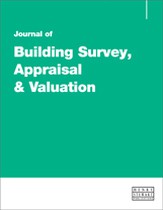Architectural terracotta and faïence: A historical perspective
Abstract
Buildings and other structures bearing terracotta and faïence feature in many towns and cities in this country. Terracotta, especially in its buff-coloured manifestation, is often mistaken for stone and architects have frequently endeavoured to emulate this rather than accept the material in its own right. This paper critically examines the development and deployment of these ceramic building materials in Britain from the 18th century through to the present and provides insights into its distinctive qualities and occasional drawbacks.
The full article is available to subscribers to the journal.
Author's Biography
Alan Swale PhD is an independent researcher and writer concerned with various aspects of the British ceramic industry. A former designer in the ceramic tableware industry, Alan lectured for many years at one of the leading courses in degree level ceramic art and design — that offered by the School of Art of the University of Wolverhampton. He subsequently headed the school’s network of Master’s degrees. The grant of a sabbatical led to the development of his interest in architectural ceramics and involvement with the Tiles and Architectural Ceramics Society (TACS). Alan has served this organisation as a former chairman, is currently head of research, production editor of its journal and presently is coordinating a major conference on terracotta and faïence to be held in 2020. He also writes on these topics for TACS’s publications. His PhD was based on a study of aspects of the modern ceramic domestic ware industry.
Citation
Swale, Alan (2019, December 1). Architectural terracotta and faïence: A historical perspective. In the Journal of Building Survey, Appraisal & Valuation, Volume 8, Issue 3. https://doi.org/10.69554/KQVD5122.Publications LLP
